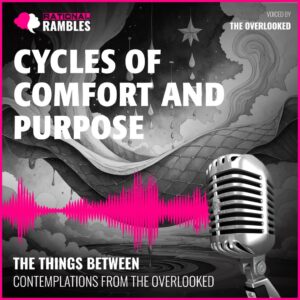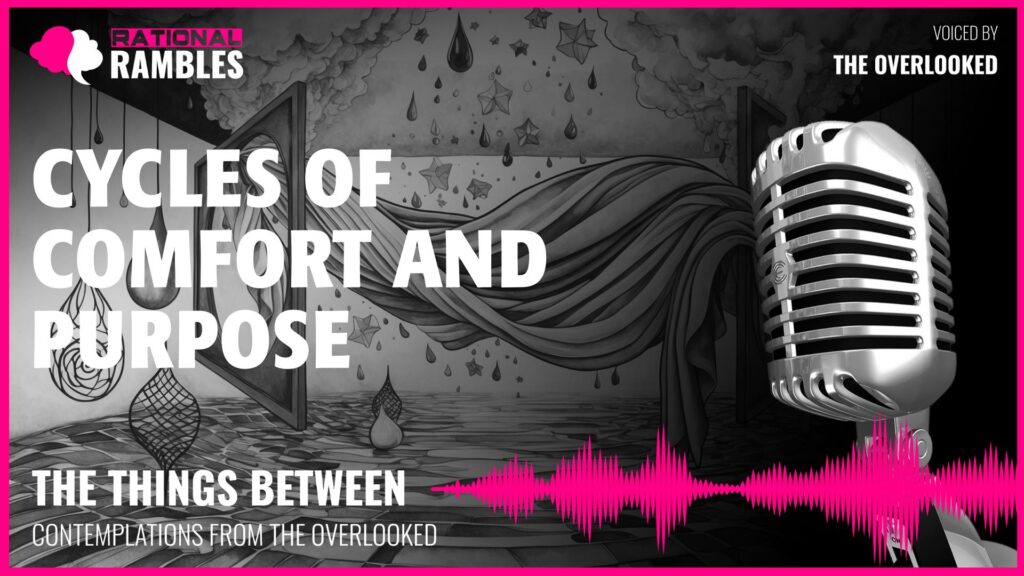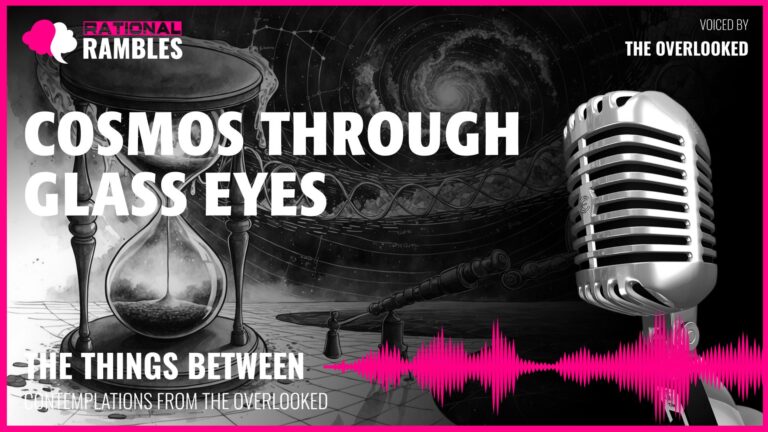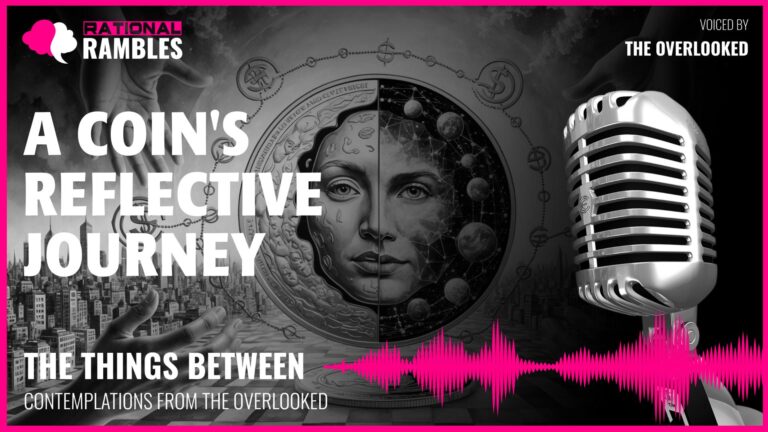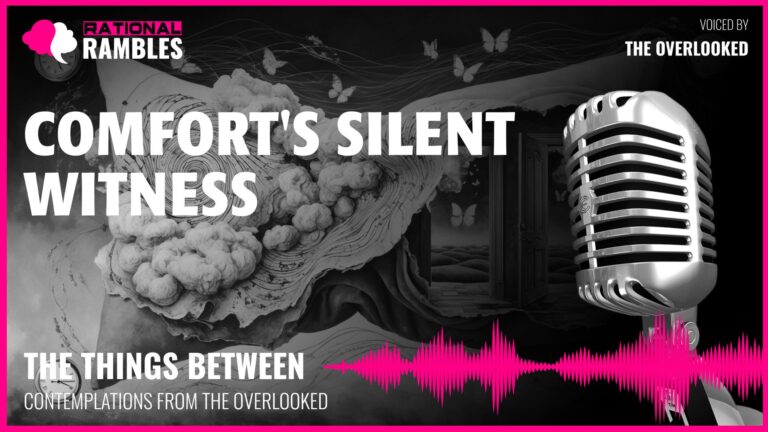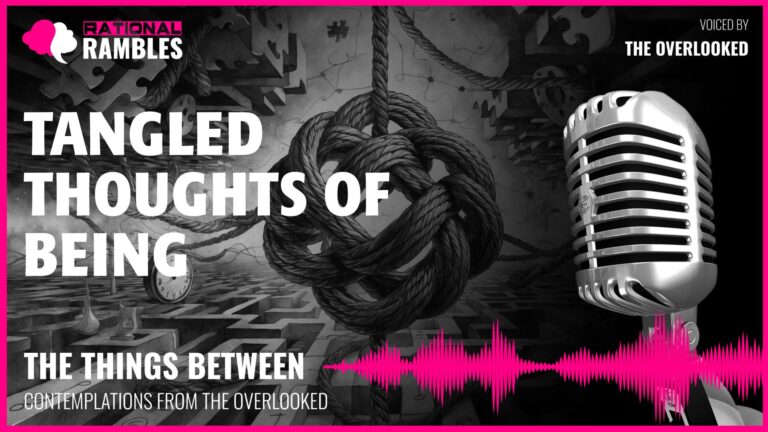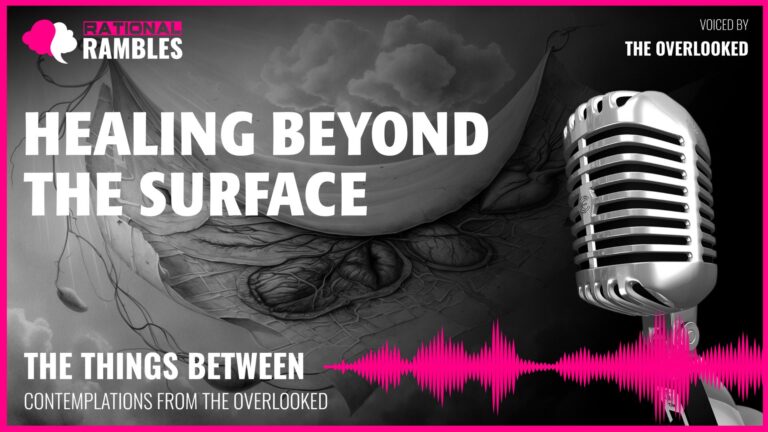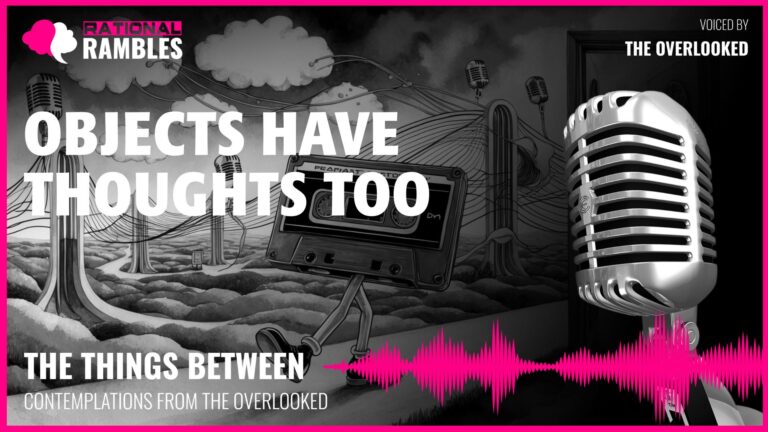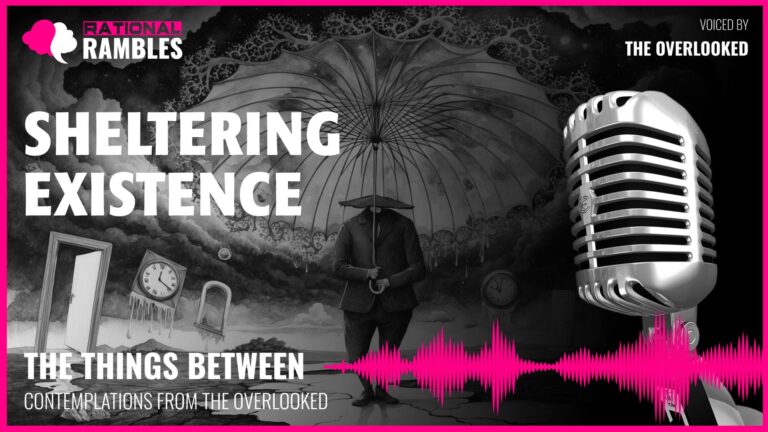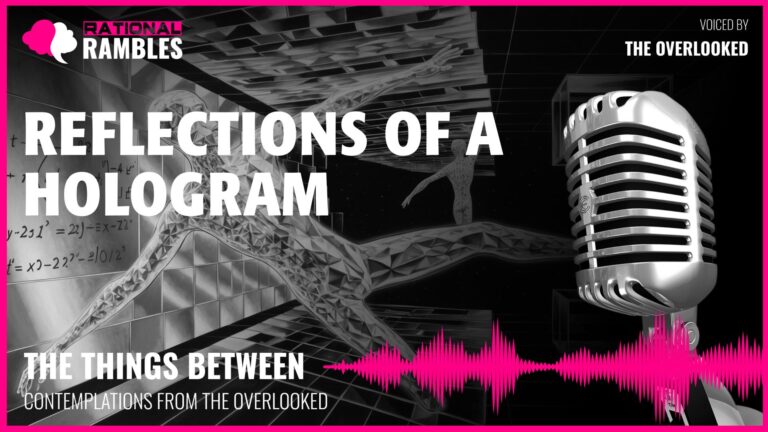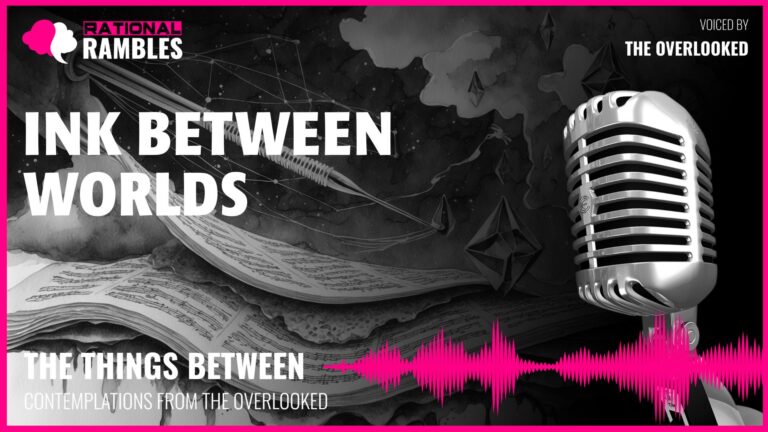Cycles of Purpose: The Philosophy of Absorption and Release
Introduction
Life consists of cycles—beginnings and endings, fullness and emptiness, purpose and rest. In the rhythmic patterns of existence, we find a profound framework for understanding not just how we navigate the world, but who we are within it. The cycle of absorption and release represents one of the most fundamental metaphysical patterns in human experience, whether manifest in physical processes, emotional exchanges, or philosophical systems.
This article explores the philosophical dimensions of cyclical purpose and the profound wisdom embedded in the processes of absorption, retention, release, and renewal. By examining these patterns, we gain insight into the nature of purpose, the value of utility, the dignity of service, and the beauty of transformation. These reflections invite us to reconsider our understanding of meaning itself—not as something we possess, but as something we participate in through our engagement with the world around us.
From the ancient Taoist concept of wu-wei (non-action) to modern existentialist perspectives on purpose and meaning, the philosophy of cyclical existence offers a rich tapestry of insights into what it means to fulfill one’s nature in a world of constant change. At its core, this investigation asks: How might we find dignity and meaning in the repetitive aspects of existence? What wisdom lies in embracing rather than resisting the natural cycles that define our being?
The Ontology of Absorption
To absorb is to take into oneself that which is external. This function—this capacity to receive, to hold, to temporarily incorporate the other—represents a profound mode of being that transcends mere physical process and touches on essential philosophical questions about boundaries, identity, and purpose.
The Metaphysics of Receiving
The act of absorption challenges our conventional understanding of fixed boundaries. When we absorb—whether physically absorbing substances, emotionally absorbing experiences, or intellectually absorbing ideas—we temporarily alter our constitution. This process asks us to reconsider fundamental ontological questions: What constitutes the self? Where do we end and the world begin? Is our identity static or permeable?
Heraclitus, the pre-Socratic philosopher known for his doctrine of perpetual flux, observed that “no man ever steps in the same river twice.” This insight points to the constantly changing nature of both the absorber and the absorbed. The river is never the same water; the man is never the same entity. Similarly, in every act of absorption, both parties are transformed through their interaction.
Absorption thus represents a kind of ontological humility—an acknowledgment that we are not self-contained units but rather exist in constant exchange with our environment. Martin Buber’s distinction between “I-It” relationships (where we remain separate from what we encounter) and “I-Thou” relationships (where we enter into genuine relationship) finds an interesting parallel here: absorption requires a kind of openness to the other that transcends mere instrumentality.
The Paradox of Usefulness and Vulnerability
One of the most striking aspects of absorption is the paradoxical relationship between capacity and vulnerability. The moment of greatest usefulness coincides with the moment of greatest burden. This paradox appears repeatedly in philosophical thought, particularly in traditions that value receptivity and openness.
Consider the Taoist concept of the empty vessel, beautifully articulated in Lao Tzu’s Tao Te Ching: “We shape clay into a pot, but it is the emptiness inside that holds whatever we want.” The usefulness comes not from the substance itself but from its capacity to receive—its emptiness becomes its purpose. Yet this very emptiness makes it vulnerable; a vessel filled to capacity is both maximally useful and maximally burdened.
This paradox extends to human experience as well. Our moments of greatest service to others often coincide with periods of significant personal burden. The parent who absorbs a child’s worries, the friend who holds space for grief, the caregiver who takes on another’s pain—all exemplify this conjunction of purpose and vulnerability. Philosopher Simone Weil touched on this when she wrote about attention as a form of generosity, noting that true attention requires emptying oneself to fully receive the reality of another.
The question emerges: Is this vulnerability a weakness or the very source of strength? Philosophical traditions from Buddhism to existentialism suggest the latter—that our capacity to remain open, to absorb without becoming hardened or closed off, represents not fragility but a profound form of resilience.
Absorption as Compassion
Beyond its physical or metaphysical dimensions, absorption contains an ethical component. To willingly absorb what is outside oneself—especially that which is unwanted or difficult—can be understood as a form of compassion. The etymology of “compassion” itself suggests this connection: from Latin com (with) and pati (to suffer), compassion literally means “to suffer with.”
Emmanuel Levinas, the 20th-century philosopher who emphasized ethical responsibility to the Other, might see in absorption an embodiment of his ethics of encounter. For Levinas, the face-to-face meeting with another person creates an immediate ethical obligation that precedes any rational calculation or reciprocal arrangement. Similarly, absorption represents a kind of unconditional reception—taking in without judgment, holding without complaint.
This ethical dimension raises important questions about the distinction between function and virtue. Is absorption merely functional, or does it represent a kind of moral excellence? Can we speak of an ethics of absorption that might guide human interactions? The philosophical traditions of care ethics and feminist philosophy, with their emphasis on receptivity and interconnection rather than autonomy and separation, offer valuable perspectives on these questions.
Cycles of Transformation and Renewal
No process of absorption exists in isolation; it is invariably part of a larger cycle that includes release, transformation, and renewal. This cyclical pattern offers rich philosophical material for understanding change, permanence, and the nature of time itself.
The Dialectic of Wet and Dry
The cycle between opposite states—wet and dry, full and empty, used and renewed—reflects a dialectical process that has occupied philosophers since ancient times. Hegelian dialectic, with its pattern of thesis, antithesis, and synthesis, offers one framework for understanding these cycles of transformation. Each state contains within it the seeds of its opposite; each fulfillment points toward a coming emptiness; each moment of use anticipates renewal.
This cyclical movement challenges linear conceptions of time and purpose. Rather than moving from point A to point B in a straight developmental line, cyclical existence suggests a spiral pattern of return and renewal, where we revisit similar states but never in exactly the same way. Nietzsche’s concept of eternal recurrence touches on this circularity, asking us to consider how we might live if we had to repeat our lives infinitely, with every joy and every pain returning again and again.
The implications for human existence are profound. If our lives are similarly cyclical—moving through periods of absorption, saturation, release, and renewal—how might this change our relationship to difficult passages? Might we find more peace in knowing that periods of burden and saturation will naturally give way to release and renewal? Conversely, might we appreciate moments of ease knowing they are temporary gifts rather than permanent states?
Baptism and Renewal
The concept of renewal through cleansing appears across religious and philosophical traditions. From ritual baths in Judaism to baptism in Christianity, from ablutions in Islam to purification rituals in Hinduism, water serves as both literal and metaphorical agent of transformation and renewal. These practices recognize the profound human need for periodic renewal—for marking transitions and fresh beginnings.
Philosopher Gaston Bachelard, in his work on the phenomenology of the elements, explores water’s dual nature as both destroyer and creator. Water dissolves and erodes, yet also nourishes and renews. This ambivalence makes water the perfect symbol for transformative processes that require both letting go and beginning again.
The philosophical significance of renewal extends beyond religious contexts. In secular terms, we might consider how renewal relates to authenticity and identity. If we are constantly renewed—if no permanent self persists unchanged through time—what provides continuity to our existence? The Buddhist concept of anatta (no-self) suggests that this very impermanence constitutes our nature, while Western philosophical traditions have sought the thread of continuity that allows us to speak of personal identity through change.
The Wisdom of Natural Cycles
Natural cycles—seasons, tides, days and nights—provide a template for understanding the rhythm of absorption and release. These patterns suggest that cycles are not merely incidental to existence but fundamental to it. From this perspective, resisting cyclical patterns means resisting reality itself.
Environmental philosophers and deep ecologists emphasize that human attempts to escape natural cycles often lead to ecological and psychological damage. When we attempt to maintain constant states—constant comfort, constant productivity, constant youth—we disrupt both natural systems and our own well-being. Acceptance of cyclical existence, by contrast, aligns us with the fundamental patterns of the natural world.
Seasonal changes illustrate this wisdom particularly well. Winter’s dormancy enables spring’s growth; summer’s abundance makes possible autumn’s harvest. Each season creates the conditions for the next, and none could exist without the others. Similarly, in human life, periods of rest enable productivity; times of absorption enable release; experiences of loss create capacity for new attachments.
This cyclical wisdom appears in indigenous philosophical traditions worldwide, which typically emphasize harmony with natural cycles rather than domination of them. These perspectives offer valuable correctives to linear, progress-oriented philosophies that see cycles as impediments to advancement rather than the very means by which renewal becomes possible.
The Dignity of Utility and Service
What constitutes a meaningful life? This perennial philosophical question takes on particular significance when considered through the lens of utility and service. While contemporary culture often privileges self-expression or personal fulfillment, there exists a profound philosophical tradition that locates meaning in usefulness to others—in absorption performed in service of larger purposes.
The Beautiful and the Useful
Western philosophy has often separated beauty from utility, privileging aesthetic appreciation over practical function. This separation reaches back to Kant’s distinction between disinterested aesthetic judgment and utilitarian value. Yet this dichotomy breaks down upon closer examination. Is there not a profound beauty in perfect function, in the complete alignment of form and purpose?
Japanese aesthetic traditions offer an alternative perspective through concepts like mingei (folk crafts) and the philosophy of wabi-sabi, which finds beauty in the imperfect, impermanent, and incomplete. The mingei movement, founded by Soetsu Yanagi, celebrated the beauty of ordinary, useful objects made by anonymous craftspeople. This tradition recognizes aesthetic value in humble objects that serve everyday needs—objects whose beauty emerges precisely from their usefulness and the careful attention with which they were made.
This integration of beauty and utility challenges us to reconsider our hierarchies of value. What if the most beautiful lives are not those filled with rare or extraordinary experiences, but those characterized by faithful service, by the perfect fulfillment of necessary functions? What if beauty lies not in escaping ordinary cycles but in performing them with complete presence and attention?
Dignity in Repetition
Modern existence often devalues repetitive tasks, seeing them as meaningless or demeaning. The philosophical glorification of choice, creativity, and novelty—from existentialist emphasis on authentic choice to capitalist celebration of innovation—can make cyclical activities seem devoid of significance. Yet what if meaning exists not despite repetition but within it?
Albert Camus’s essay “The Myth of Sisyphus” presents one approach to this question. Camus describes Sisyphus—condemned by the gods to roll a boulder up a hill for eternity, only to watch it roll back down—as ultimately happy in his task. “The struggle itself toward the heights is enough to fill a man’s heart,” Camus writes. “One must imagine Sisyphus happy.” This perspective suggests that meaning can be found not in escaping repetitive tasks but in fully embracing them, in bringing complete consciousness to each iteration of the cycle.
Eastern philosophical traditions offer similar insights. Zen Buddhism’s emphasis on mindfulness in everyday activities—whether washing dishes, raking gravel, or preparing tea—locates profound meaning in the complete presence brought to repetitive actions. The cyclical nature of such tasks becomes not a burden but an opportunity for continuous practice and renewed attention.
These perspectives invite us to reconsider dismissive attitudes toward repetitive service. Perhaps there is profound dignity in doing the same necessary task day after day, not with resignation but with full presence and acceptance. Perhaps true meaning lies not in escaping cycles but in perfecting our participation in them.
Invisibility and Recognition
One of the paradoxes of essential service is that it often becomes visible only in its absence. We notice the absence of cleanliness, not its presence; we remark on failure to absorb, not successful absorption. This invisibility raises important philosophical questions about recognition, value, and justice.
Feminist philosopher Susan Moller Okin and others have noted how traditional philosophical conceptions of justice often overlook work traditionally performed by women—including cyclical care work that must be repeated daily. This invisibility represents not just a practical oversight but a conceptual blindness that shapes how we understand value and contribution.
Hegel’s famous dialectic of master and slave offers another angle on this dynamic. The master depends on the slave’s labor but fails to recognize this dependence, believing himself self-sufficient. Similarly, many essential functions in society—from sanitation to basic care work—remain invisible to those who benefit from them, creating a distorted understanding of independence and value.
This invisibility connects to larger questions about recognition. Philosopher Axel Honneth argues that recognition from others constitutes a basic human need and right. When essential functions remain invisible or undervalued, those who perform them suffer not just material but ethical harm—the harm of misrecognition. A philosophy that takes absorption and service seriously must grapple with this challenge of making the essential visible and valued.
Intimacy, Boundaries, and Care
The nature of absorption inevitably raises questions about intimacy, boundaries, and care. These dimensions touch on some of the most profound aspects of human experience—our connections with others, our vulnerability, and our capacity for compassionate presence.
The Ethics of Intimate Contact
Absorption often occurs at points of intimate contact—when we encounter others at their most vulnerable, when we touch what is usually untouched, when we receive what is typically hidden. This intimacy carries ethical significance that extends beyond functional utility.
Philosopher Virginia Held, in her work on the ethics of care, suggests that care represents not just a practical activity but a moral paradigm that challenges traditional ethical frameworks based on abstract principles or rights. Care ethics emphasizes relationship, context, and responsiveness to particular needs rather than universal rules. From this perspective, absorption—taking in another’s needs, holding them with care, responding with presence—represents ethical action at its most fundamental.
The intimacy of absorption raises important questions about consent and boundaries. When is absorption freely chosen, and when is it imposed? How do power differentials affect who absorbs and who is absorbed? These questions become particularly significant in human contexts where some individuals or groups disproportionately absorb others’ difficulties—from caregivers who absorb family stress to marginalized communities that absorb social problems.
Witness and Presence
Beyond practical function, absorption often involves bearing witness to transformative moments. The presence that accompanies difficult passages—illness, grief, significant transitions—represents a profound form of absorption that goes beyond physical care.
Philosopher Emmanuel Levinas emphasizes the ethical demand of the face-to-face encounter—the way another’s presence calls us to response and responsibility. This demand becomes particularly acute in moments of vulnerability, when mere presence becomes a form of absorption, a holding of space that allows transformation to occur.
The therapeutic tradition offers valuable insights here. Psychoanalyst D.W. Winnicott’s concept of “holding environments” describes spaces where individuals can safely experience difficult emotions because someone else absorbs some of the difficulty through their steady presence. Similarly, Carl Rogers’s concept of unconditional positive regard points to the healing power of non-judgmental absorption—being fully present to another without attempting to change or fix them.
These perspectives suggest that one of the most profound forms of absorption lies in simple presence—in the willingness to witness another’s experience without turning away, to absorb difficulty not by removing it but by standing alongside it. This capacity represents not just psychological skill but philosophical wisdom about the nature of human connection.
The Paradox of Personal and Communal
Absorption often occurs at the intersection of the deeply personal and the broadly communal. This intersection raises fascinating philosophical questions about the boundaries between private and public, individual and collective.
Feminist theorist Carol Gilligan notes that traditional Western philosophy has often privileged separation and autonomy over connection and relationship. Yet absorption reminds us that boundaries are permeable, that we exist in constant exchange with our environment and with others. This recognition challenges individualistic philosophical frameworks that see persons as fundamentally separate units who choose to enter into relationships rather than as beings constituted by relationship from the beginning.
The communal dimension of absorption extends to broader questions about shared resources and responsibilities. Environmental philosopher Aldo Leopold’s “land ethic” suggests that we are not separate from but members of the ecological community, constantly participating in cycles of giving and receiving. From this perspective, absorption represents not an exceptional state but the ordinary condition of existence within interdependent systems.
These reflections invite us to reconsider rigid distinctions between personal and communal, private and public. Perhaps the most truthful account of existence acknowledges both our separateness and our profound interconnection—the ways we maintain boundaries while remaining permeable to what surrounds us.
Mortality, Purpose, and Memory
All cycles eventually include an ending. The philosophy of absorption must therefore confront questions of mortality, finite purpose, and what remains when physical existence ends.
The Dignity of Finite Purpose
The recognition that all existence is temporary raises profound questions about purpose. Does meaning require permanence, or might it exist precisely in the temporary, in the cycle that includes both creation and dissolution?
Existentialist philosophers have grappled deeply with these questions. Martin Heidegger’s concept of “being-toward-death” suggests that authentic existence requires confronting rather than denying mortality. From this perspective, the temporary nature of all absorption—the fact that nothing can absorb forever, that all vessels eventually wear out—does not diminish but rather intensifies its significance.
Japanese aesthetics again offers valuable insights through the concept of mono no aware—the pathos or sensitivity to the impermanence of things. This aesthetic sensibility finds beauty not despite transience but because of it; the cherry blossom is more beautiful because it falls, not in spite of its falling. Similarly, absorption gains rather than loses dignity through its temporary nature—through the recognition that all capacity has limits, all service eventually ends.
This perspective challenges the common association between meaning and permanence. Perhaps meaning exists not in lasting forever but in fully embodying one’s nature during the time one has—in absorbing completely, in serving wholeheartedly, in participating fully in the cycle that includes both function and rest.
Legacy and Memory
When physical existence ends, what remains? This question applies not just to human lives but to all forms of meaningful service. Is absorption remembered, honored, recognized as contribution? Or does it disappear without trace, its significance as temporary as its function?
Philosopher Avishai Margalit distinguishes between “common memory” (shared among contemporaries) and “historical memory” (transmitted across generations). Most acts of absorption—most daily acts of service and care—exist only in common memory, if they are remembered at all. They leave no historical record, no monument, no named achievement. Does this absence from historical memory diminish their significance?
Here we might consider philosopher Thomas Nagel’s reflections on “the absurd”—the gap between human aspirations for cosmic significance and the brevity of our lives. Nagel suggests that the solution lies not in denying this gap but in embracing our finite significance with a kind of ironic acceptance. From this perspective, the fact that most absorption goes unremembered does not make it meaningless but rather locates its meaning in the moment, in the function itself rather than in recognition or legacy.
Yet perhaps absorption does leave a trace, not in monuments or records but in the ongoing cycles it enables. Each act of absorption—each holding and release—creates conditions for what follows. In this sense, the legacy exists not in being remembered but in having participated in the continuous cycles that make life possible.
The Philosophy of Endings
How should we understand the end of useful service? When absorption is no longer possible—when capacity diminishes, when function fails—what philosophical resources help us make sense of this transition?
Buddhism offers one approach through its emphasis on non-attachment and impermanence. The recognition that all phenomena arise and pass away—that nothing persists unchanged—provides a framework for accepting with equanimity the end of particular functions or capacities. From this perspective, the cessation of one form of service simply represents another turn in the larger cycle of existence.
Western philosophical traditions offer complementary insights. Aristotle’s concept of telos or “end” includes both termination and purpose—the sense that the meaning of something lies in the full expression of its nature, its complete development according to its kind. From this teleological perspective, an ending represents not failure but fulfillment—the completion of a purpose rather than its interruption.
These traditions suggest that endings need not be approached with fear or resistance but might instead be met with curiosity, acceptance, or even serenity. If meaning lies in the expression of one’s nature rather than in endless continuance, then the completion of a cycle represents not tragedy but natural fulfillment.
The Wisdom of Absorption: Philosophical Lessons
What wisdom might we glean from this philosophical exploration of absorption, cycles, and purpose? Several key insights emerge that offer guidance not just for abstract thought but for lived experience.
The Virtue of Non-Resistance
Perhaps the most fundamental lesson lies in non-resistance—in the wisdom of accepting rather than fighting natural cycles. The Taoist concept of wu-wei or “non-action” captures this approach, suggesting that harmony comes not from imposing our will but from aligning ourselves with the natural flow of existence.
Philosopher Alan Watts describes this as “the wisdom of insecurity”—the recognition that trying to hold onto security actually increases anxiety, while accepting impermanence brings peace. From this perspective, absorption teaches us to receive what comes without resistance, to hold without grasping, and to release without clinging.
This non-resistance extends to emotional experience as well. Psychotherapeutic approaches increasingly recognize that attempting to avoid difficult emotions often amplifies them, while accepting and absorbing them allows their natural transformation. The willingness to feel fully—to absorb experience without pushing it away—represents a profound form of wisdom that spans philosophical and psychological traditions.
Finding Meaning in Function
A second key insight concerns the relationship between meaning and function. While contemporary culture often locates meaning in self-expression, achievement, or unique contribution, the philosophy of absorption suggests an alternative: meaning through the perfect fulfillment of necessary function.
Philosopher Simone Weil touches on this in her writings on attention and obligation. For Weil, the highest form of action lies not in asserting oneself but in attending fully to what is needed—in becoming transparent to the requirements of a situation. This perspective suggests that meaning comes not from standing out but from fitting perfectly into the cycles of giving and receiving that constitute life.
This view challenges hierarchies that privilege certain kinds of work or contribution over others. If meaning lies in the alignment of nature and function—in being fully what one is—then the humblest necessary task contains as much potential for meaning as the most exalted. The question becomes not “How important is my role?” but “How completely do I fulfill it?”
The Ethics of Capacity and Limit
A third insight concerns the ethical dimensions of capacity and limit. The fact that absorption always reaches a point of saturation—that no vessel can absorb infinitely—points toward an ethics that honors limits rather than trying to transcend them.
Environmental ethicist Wendell Berry emphasizes the importance of recognizing and respecting natural limits rather than pursuing endless growth or expansion. This perspective suggests that wisdom lies not in maximizing capacity beyond sustainable limits but in finding the right measure—the balance point where absorption serves life rather than depleting it.
This wisdom applies to individual lives as well as ecological systems. The recognition that personal capacity is finite—that we cannot absorb endlessly without renewal—points toward ethical practices of self-care and boundary-setting. These practices represent not selfishness but stewardship: the responsible management of limited resources in service of sustained function.
The Integration of Opposites
A final philosophical lesson concerns the integration of apparent opposites. Absorption contains within it multiple paradoxes: it cleanses by becoming soiled; it dries by becoming wet; it serves by taking on burden. These paradoxes point toward a philosophical approach that embraces rather than resolves tension, that sees complementarity rather than contradiction in opposing forces.
Carl Jung’s concept of individuation—the process of psychological integration that includes embracing rather than projecting shadow elements—offers one framework for understanding this wisdom. From Jung’s perspective, wholeness comes not from eliminating tension between opposites but from holding that tension creatively, allowing apparently contradictory elements to coexist within a larger unity.
This integration applies to philosophical understanding as well as psychological development. The either/or logic that characterizes much Western philosophy gives way to both/and thinking that recognizes the interpenetration of opposing principles. Cycles of absorption remind us that wet contains dry, that burden enables purpose, that receiving makes possible giving—that apparent opposites actually depend upon and create each other.
Conclusion: The Philosophy of Humble Cycles
As we conclude this philosophical exploration of absorption, cycles, and purpose, we return to a fundamental question: Where does meaning reside in a cyclical existence? If purpose lies not in progress toward some final goal but in the faithful repetition of necessary functions, how should we understand the significance of our own cycles of giving and receiving?
Perhaps the answer lies in a shift of perspective—from seeing meaning as something we achieve to recognizing it as something we participate in. The cycles of absorption and release, of service and renewal, connect us to patterns larger than ourselves. By entering fully into these cycles—by absorbing wholeheartedly, by releasing without resistance, by renewing with gratitude—we align ourselves with the fundamental rhythms of existence.
This alignment brings a peculiar kind of peace. When we cease struggling against the cyclical nature of existence and instead embrace it, we discover what Taoists call “action through non-action”—the paradoxical effectiveness that comes from moving with rather than against the grain of reality. We find dignity not despite repetition but within it, meaning not despite impermanence but because of it.
The humble wisdom of absorption teaches us that significance need not be extraordinary to be profound. In the complete expression of our nature—in the perfect fulfillment of necessary function—lies a quiet kind of excellence that asks nothing beyond itself. To absorb well, to serve faithfully, to participate fully in the cycles that sustain life: perhaps this simple formula contains all the philosophy we need.
In a culture that often privileges the novel over the necessary, the visible over the essential, the permanent over the cyclical, this philosophy offers a valuable corrective. It reminds us that meaning exists not just in what stands out but in what sustains, not just in what endures unchanged but in what participates in the constant renewal of life. In the humble cycles of absorption and release, we find not just philosophical insight but practical wisdom for living well in a world of constant change.


